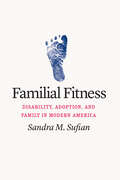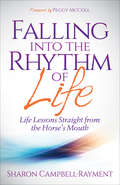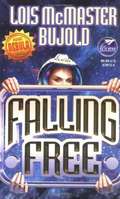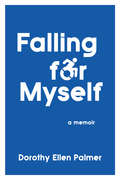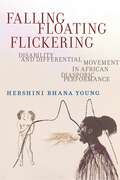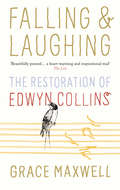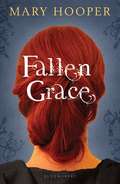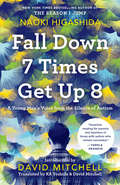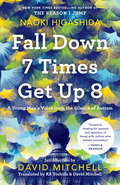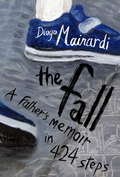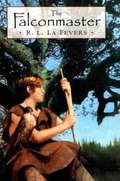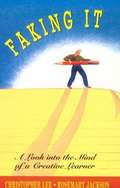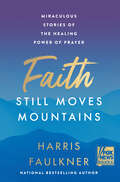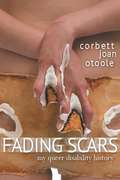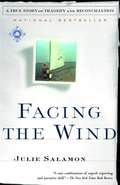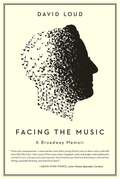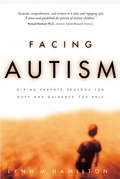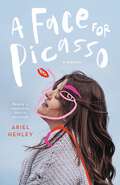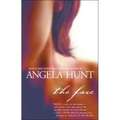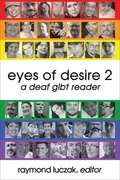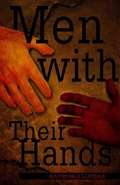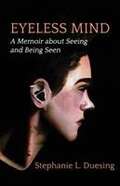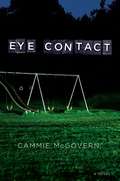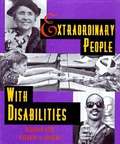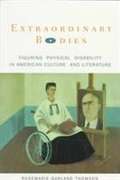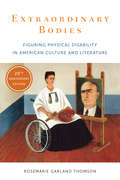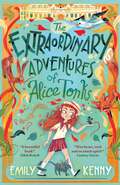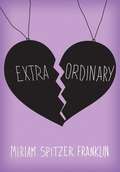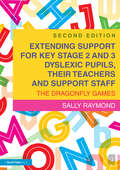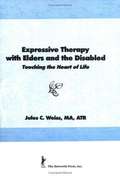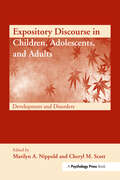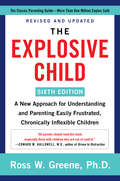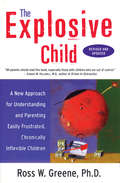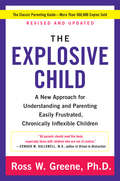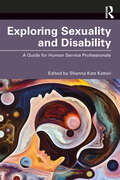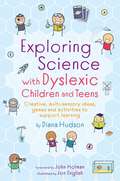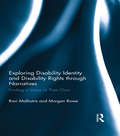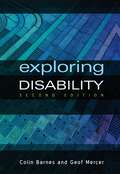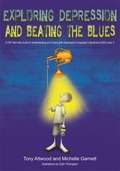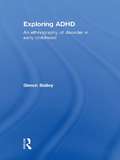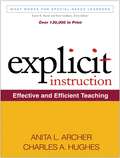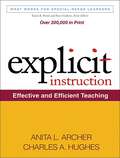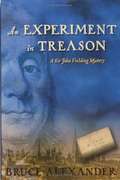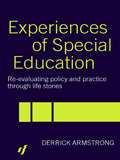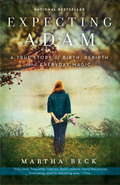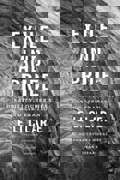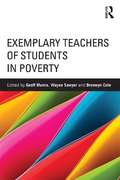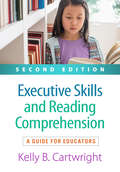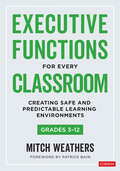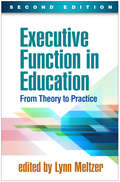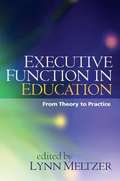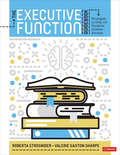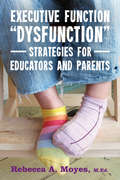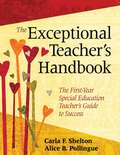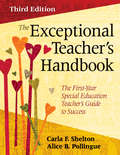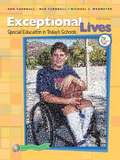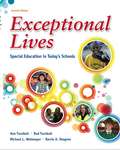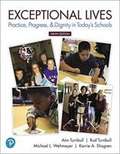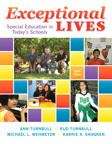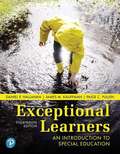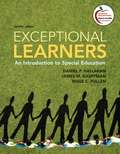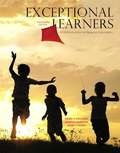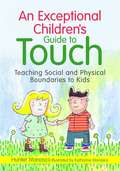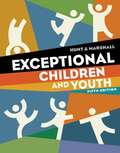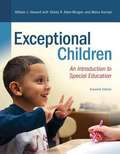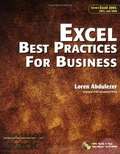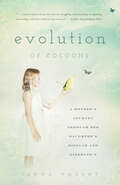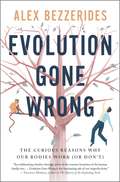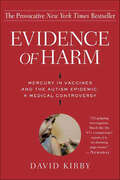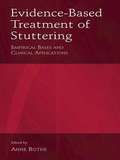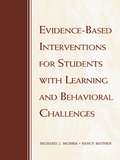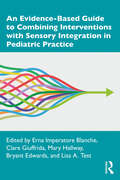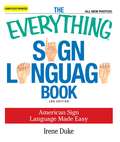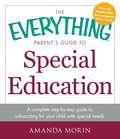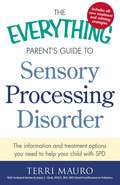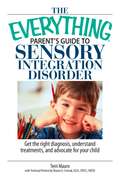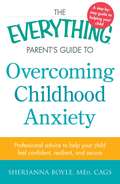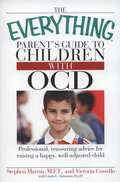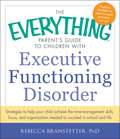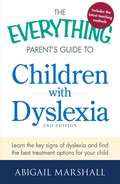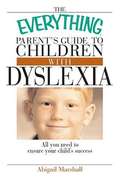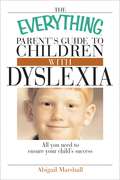Familial Fitness: Disability, Adoption, and Family in Modern America
by Sandra M. SufianThe first social history of disability and difference in American adoption, from the Progressive Era to the end of the twentieth century. Disability and child welfare, together and apart, are major concerns in American society. Today, about 125,000 children in foster care are eligible and waiting for adoption, and while many children wait more than two years to be adopted, children with disabilities wait even longer. In Familial Fitness, Sandra M. Sufian uncovers how disability operates as a fundamental category in the making of the American family, tracing major shifts in policy, practice, and attitudes about the adoptability of disabled children over the course of the twentieth century. Chronicling the long, complex history of disability, Familial Fitness explores how notions and practices of adoption have—and haven’t—accommodated disability, and how the language of risk enters into that complicated relationship. We see how the field of adoption moved from widely excluding children with disabilities in the early twentieth century to partially including them at its close. As Sufian traces this historical process, she examines the forces that shaped, and continue to shape, access to the social institution of family and invites readers to rethink the meaning of family itself.
Falling into the Rhythm of Life: Life Lessons Straight from the Horse's Mouth
by Sharon Campbell-RaymentIn every tragedy there is the ability to heal and rise above the challenge. In Falling into the Rhythm of Life, author Sharon Campbell-Rayment leads readers through her personal story of a devastating accident and her path to healing and recovery. She also provides readers with helpful lessons, tips and techniques called – Life Lessons Straight From the Horse's Mouth – written to equip readers on their own journeys.
Falling into Life
by Leonard KriegelLeonard Kriegel writes essays about his struggles with being a man and having polio.
Falling Free (Miles Vorkosigan #4)
by Lois Mcmaster BujoldDisability politics in space. Disability politics in outer space. Same setting as the Vorkosigan Saga, but set approximately 200 years before Miles is born.<P><P> Leo Graf was an effective engineer ...Safety Regs weren't just the rule book he swore by; he'd helped write them. All that changed on his assignment to the Cay Habitat. Leo was profoundly uneasy with the corporation exploitation of his bright new students - - 'till that exploitation turned to something much worse. He hadn't anticipated a situation where the right thing to do was neither safe, nor in the rules... Leo Graf adopted 1000 quaddies -- now all he had to do was teach them to be free.<P> Nebula Award winner.
Falling for Myself
by Dorothy Ellen PalmerIn this searing and seriously funny memoir, Dorothy Ellen Palmer falls down, a lot, and spends a lifetime learning to appreciate her disability. Born with two very different, very tiny feet, she was adopted as a toddler by an already wounded 1950s family. From childhood surgeries to decades as a feminist teacher, mom, improv coach and unionist, she tried to hide being different. But now, standing proud with her walker, she's sharing her journey. Navigating abandonment, abuse and ableism, she finds her birth parents and a new chosen family in the disability community.
Falling, Floating, Flickering: Disability and Differential Movement in African Diasporic Performance (Crip #7)
by Hershini Bhana YoungInsists on the importance of embodiment and movement to the creation of Black socialityLinking African diasporic performance, disability studies, and movement studies, Falling, Floating, Flickering approaches disability transnationally by centering Black, African, and diasporic experiences. By eschewing capital’s weighted calculus of which bodies hold value, this book centers alternate morphologies and movement practices that have previously been dismissed as abnormal or unrecognizable. To move beyond binaries of ability, Hershini Bhana Young traverses multiple geohistories and cultural forms stretching from the United States and the Mediterranean to Sierra Leone, Nigeria, and South Africa, as well as independent and experimental film, novels, sculptures, images, dance, performances, and anecdotes. In doing so, she argues for the importance of differential embodiment and movement to the creation and survival of Black sociality, and refutes stereotypic notions of Africa as less progressive than the West in recognizing the rights of disabled people. Ultimately, this book foregrounds the engagement of diasporic Africans, who are still reeling from the violence of colonialism, slavery, poverty, and war, as they gesture toward a liberatory Black sociality by falling, floating, and flickering.
Falling and Laughing: The Restoration of Edwyn Collins
by Grace MaxwellIn February 2005, Edwyn Collins suffered two devastating brain haemorrhages. He should have died. Doctors advised that if he did survive, there would be little of him left. If that wasn't enough, he went on to contract MRSA as a result of an operation to his skull and spent six months in hospital. Initially, Edwyn couldn't speak, read, write, walk, sit up or feed himself. He had lost all movement in his right side and was suffering from aphasia - an inability to use or understand language. When he initially recovered consciousness the only words he could say were 'Grace', 'Maxwell', 'yes' and 'no'.But with the help of his partner Grace and their son Will, Edwyn fought back. Slowly, and with monumental effort, he began to teach his brain to read and speak all over again - with some areas of his mind it was if he had been a slate wiped utterly clean. Through a long and arduous road of therapy he began to re-inhabit his body until he could walk again. Grace's story is an intimate and inspiring account of what you do to survive when your husband is all but taken away without warning by a stroke.
Fallen Grace
by Mary HooperLife has been nothing but unfair to Grace Parkes and her sister. Penniless, the two orphans manage to stay alive-but only barely, like so many on the streets of Victorian London. And Grace must bear a greater heartbreak, having become pregnant from terrible circumstances and then given birth to a stillborn baby. But the infant's death sets Grace on a new path, bringing her into contact with people who hold both riches and power. A great fraud has been perpetrated on young Grace and her sister, and they are the secret recipients of a most unusual legacy-if only they can find the means to claim it. Mary Hooper's latest offers Dickensian social commentary, as well as malicious fraud, mysterious secrets, and a riveting read.
Fall Down 7 Times Get Up 8: A Young Man's Voice from the Silence of Autism
by David Mitchell Naoki Higashida Ka YoshidaFrom the author of the bestselling The Reason I Jump, an extraordinary self-portrait of life as a young adult with autism Naoki Higashida was only thirteen when he wrote The Reason I Jump, a revelatory account of autism from the inside by a nonverbal Japanese child, which became an international success. Now he shares his thoughts and experiences as a twenty-four-year-old man living each day with severe autism. In short, powerful chapters, Higashida explores school memories, family relationships, the exhilaration of travel, and the difficulties of speech. He also allows readers to experience profound moments we take for granted, like the thought-steps necessary for him to register that it’s raining outside. Acutely aware of how strange his behavior can appear to others, he aims throughout to foster a better understanding of autism and to encourage society to see people with disabilities as people, not as problems. With an introduction by bestselling novelist David Mitchell, Fall Down 7 Times Get Up 8 also includes a dreamlike short story Higashida wrote especially for this edition. Both moving and of practical use, this book opens a window into the mind of an inspiring young man who meets every challenge with tenacity and good humor. However often he falls down, he always gets back up.Advance praise for Fall Down 7 Times Get Up 8“Vibrant . . . In Mitchell and Yoshida’s deft translation, Higashida conveys this isolating mindset and his yearnings for connection and self-expression, in direct, evocative prose—his compulsive, restless motion, he writes, is ‘instinctual, like a wild animal running over a wide plain’—that provides readers with a window into a previously unknowable world.”—Publishers Weekly “Illuminating . . . Autism is a mysterious neurological condition. . . . Higashida gives us a thoughtful view of the art of living well in its shadow.”—Kirkus Reviews “Readers will find this older Higashida not only eloquent and thoughtful, but also wise, measured and, most of all, kind.”—BookPage“This book is essential reading for parents and teachers of those with autism who remain nonverbal.”—Temple Grandin, author of The Autistic Brain and Thinking in Pictures“Compelling insight on every single page, gently challenging assumptions you didn’t even know you held on how others ‘should’ process the social and physical environments around us.”—Ellen Notbohm, author of Ten Things Every Child with Autism Wishes You Knew
Fall Down 7 Times Get Up 8: A Young Man's Voice from the Silence of Autism
by David Mitchell Ka Yoshida Naoki HigashidaA story never before told and a memoir to help change our understanding of the world around us, 13-year-old Naoki Higashida's astonishing, empathetic book takes us into the mind of a boy with severe autism. With an introduction by David Mitchell, author of the global phenomenon, Cloud Atlas, and translated by his wife, KA Yoshida.Naoki Higashida was only a middle-schooler when he began to write The Reason I Jump. Autistic and with very low verbal fluency, Naoki used an alphabet grid to painstakingly spell out his answers to the questions he imagines others most often wonder about him: why do you talk so loud? Is it true you hate being touched? Would you like to be normal? The result is an inspiring, attitude-transforming book that will be embraced by anyone interested in understanding their fellow human beings, and by parents, caregivers, teachers, and friends of autistic children. Naoki examines issues as diverse and complex as self-harm, perceptions of time and beauty, and the challenges of communication, and in doing so, discredits the popular belief that autistic people are anti-social loners who lack empathy. This book is mesmerizing proof that inside an autistic body is a mind as subtle, curious, and caring as anyone else's.
The Fall
by Diogo Mainardi Margaret Jull CostaTHE FALL is a memoir like no other. Its 424 short passages match the number of steps taken by Diogo Mainardi's son Tito as he walks, with great difficulty, alongside his father through the streets of Venice, the city where a medical mishap during Tito's birth left him with Cerebral Palsy. As they make their way toward the hospital where both their lives changed forever, Mainairdi begins to draw on his knowledge of art and history, seeking to better explain a tragedy that was entirely avoidable. From Marcel Proust to Neil Young, to Sigmund Freud to Humpty Dumpty, to Renaissance Venice and Auschwitz, he charts the trajectory of the Western world, with Tito at its center, showing how his fate has been shaped by the past. Told with disarming simplicity; by turns angry, joyful, and always generous, wise and suprising, THE FALL is an anstonishing book.
The Falconmaster
by R. L. LaFeversThis fantasy combines wizardry and magic with an absorbing animal-rescue story and should appeal to all fantasy lovers, but especially boys. Wat, a crippled boy, is an outcast in his village and retreats often to the forest, away from the cruel taunts of the villagers. There he witnesses the lord's handlers heartlessly kill a nesting pair of falcons so they can take the baby birds for their master. Wat, outraged, steals the nestlings and escapes into the heart of the forest, where he meets a mysterious old man. He is a mage-a wizard-who teaches him many things, among them how to care for the birds so that they may eventually fly free, and how to find some helpful magic-which is closer to him than he ever believed.
Faking It: A Look into the Mind of a Creative Learner
by Christopher M. Lee Rosemary F. JacksonThis book is not about a person who has a learning disability. It is the story of a creative learner--one who has been given the label "learning disabled."
Faith Still Moves Mountains: Miraculous Stories of the Healing Power of Prayer
by Harris FaulknerFrom FOX News anchor and author Harris Faulkner comes a collection of powerful, true-life stories of resilience, healing, rescue, and protection.We need reminders of God’s power now more than ever.We often think about prayer as a wish list, with God as Santa Claus. The reality is that the power of prayer reminds us not only how small we are, but also how big God is. Prayer is hope put into action. And prayer works.From the aftermath of the devastating earthquake in Haiti to the theater shooting in Aurora, Colorado, believers testify to how God inspired hope even when all seemed lost.Two teenagers who were saved from treacherous seas by a vessel named Amen now give thanks for the rescue that changed their lives. A woman’s near-death experience with COVID-19 turned out to be the crisis freeing her from despair. Others speak to how prayer helped them navigate family trauma, overcome abuse, and cope with mental illness and depression. Historical accounts of miracles testify to God’s power throughout time, and Faulkner recounts the role of faith and prayer in her own life and the life of her father.Along with these stories of God’s presence, the book includes an exclusive packet of newly written prayers. Created to reflect the current times, this prayer booklet will provide a road map for putting the lessons of these stories into action.Faith Still Moves Mountains reminds us that God’s light always shines through the darkness. Through these testimonies, we learn prayer isn’t just a ritual, it’s a vital spiritual strategy in a world that wants us to give up the fight.
Fading Scars: My Queer Disability History
by Corbett Joan OtooleUncovering stories about disability history and life, OToole shares her firsthand account of some of the most dramatic events in Disability History, and gives voice to those too often yet left out. From the 504 Sit-in and the founding of the Center for Independent Living in Berkeley, to the Disability Forum at the International Woman's Conference in Beijing; through dancing, sports, queer disability organizing and being a disabled parent, OToole explores her own and the disability community's power and privilege with humor, insight and honest observations.<P><P> "Corbett Joan OToole's Fading Scars: My Queer Disabled History is like a song-an anthem, a lullaby, a ballad, a love lyric and a chant all at once. This book of essays chronicles one person's life, but also the 40 years that disability rights and disability justice shaped American history. Its first-person accounts of historical events, fierce focus on disabled identities, and consistently accessible language and structure make it unusual-perhaps even unique-among disability memoirs. Bursting with ideas, stories, and arguments, Fading Scars is a book in which experience accrues into knowledge and emerges through the written word as wisdom. Fading Scars combines razor-sharp organization with passages of lyrical beauty. It establishes a new standard, perhaps even the beginning of a new aesthetic, for disability writing." - Margaret Price, author of Mad at School: Rhetorics of Mental Disability and Academic Life.<P> "Illuminating disability history with clear and funny stories, this book builds a home where those of us who have lived on the sidelines can seek shelter." - Naomi Ortiz, Writer, Artist and Disability Justice Activist<P> "Fading Scars is a must read for those interested in disability community, activism, and scholarship." - Kim Nielsen, author of A Disability History of the United States (ReVisioning American History)
Facing the Wind: A True Story of Tragedy and Reconciliation
by Julie SalamonIn 1978 Robert Rowe, a Brooklyn attorney, murdered his wife and three children; his 12-year-old son Christopher was blind and had multiple disabilities. Three years earlier Rowe had been diagnosed with psychotic depression. He was acquitted of the murders on the insanity plea. After two years in a psychiatric hospital he was released and set out to build a new life. Salamon bases her book on extensive interviews with the people who knew Rowe and his family. Key among them are the members of a support group for mothers of blind children. The attitudes of the mothers, as conveyed by Salamon, are highly negative toward blind people, and the children are consistently portrayed as burdensome to their parents. On the plus side, the book raises probing questions about the nature of guilt and atonement, sanity and madness, and the meaning of forgiveness.
Facing the Music: a Broadway memoir
by David LoudMusical Director and arranger David Loud, a legendary Broadway talent, recounts his wildly entertaining and deeply poignant trek through the wilderness of his childhood and the edge-of-your-seat drama of a career on, in, under, and around Broadway for decades. He reveals his struggle against the ravages of Parkinson's and triumphs repeatedly. This memoir is also a remarkable love letter to music. Loud is the 'Ted Lasso' of the theater business, ever the optimist!&“&‘Music has consequences,&’ a wise teacher once told a young David Loud; so does a story well-told and a life fully-lived. I lost count of how many times I laughed, cried, and laugh-cried reading this wonderful, wry, intimate, and inspiring book. David wields a pen like he wields a baton, with perfect timing, exquisite phrasing, and enormous heart.&” — David Hyde Pierce, actor, Frasier, Spamalot, Curtains &“Beautifully written, filled with vivid details, braided with love and loss and wit and the perspective of someone with an utterly unique story to tell." -- Lynn Ahrens, lyricist, Ragtime, Once on This Island, Anastasia &“Luminous and surprising, an extremely honest memoir of a life lived in the world of Broadway musicals, by one of the theatre&’s most gifted conductors. I can&’t think of another book quite like it.&” -- John Kander, composer, Cabaret, Chicago, New York, New York Unforgettably entertaining and emotionally revealing, Loud is pitch-perfect as he describes his path to the podium, from a stage-struck kid growing up at a school devoted to organic farming and mountain climbing, to the searing formative challenges he faces during adolescence, to the remarkable behind-the-scenes stories of his Broadway trials and triumphs. Skilled at masking his fears, Loud achieves his dream until one fateful opening night, when in the midst of a merry, dressing room celebration, he can no longer deny reality and must suddenly, truly, face the music.
Facing Autism: Giving Parents Reasons for Hope and Guidance for Help
by Lynn M. HamiltonDon't Let Autism Have the Last Word in Your Child's Life. Perhaps one of the most devastating things you can learn as a parent is that your child has been diagnosed with autism. A multifaceted disorder, autism has long baffled parents and professionals alike. At one time, doctors gave parents virtually no hope for combating the disorder. But in recent years, new treatments and therapies have demonstrated that improvement is possible. With intensive, early intervention, some children have recovered from autism and have been integrated into school, indistinguishable from their peers. Discover ten things you can do to begin battling your child's autism right now. See why Applied Behavior Analysis has become parents' treatment of choice, and examine its impressive results. Get information on cutting-edge biomedical treatments such as secretin and immunotherapy. Learn how dietary intervention can positively impact your child's behavior. Find out what additional therapies can offer - including sensory and auditory integration. Explore loving ways to keep your family together when your world is torn apart. Children with autismdohave the possibility to improve greatly, and some even overcome the effects of autism, if appropriate therapies are begun early enough. Discover the steps you can take today to begin the fight for your child's future inFacing Autism.
The Face of the Deep
by Jacob TwerskyThough it was published in 1953, this book is grimly relevant today. The author, who was blind himself, writes about blindness from the inside. The theme of the novel is prejudice with all its overwhelming repercussions. Twersky's blind characters all suffer its devastating effects, and it shapes every aspect of their lives. The self-hatred spawned by this prejudice spurs them to deny and denigrate one another. This is not a pretty story, though it has soaring moments, and some of the characters manage to rise above their circumstances with integrity and compassion intact.
A Face for Picasso: Coming of Age with Crouzon Syndrome
by Ariel HenleyA Schneider Family Book Award Honor Book for Teens"Raw and unflinching . . . A must-read!" --Marieke Nijkamp, #1 New York Times-bestselling author of This Is Where It Ends"[It] cuts to the heart of our bogus ideas of beauty." –Scott Westerfeld, #1 New York Times-bestselling author of Uglies I am ugly. There's a mathematical equation to prove it.At only eight months old, identical twin sisters Ariel and Zan were diagnosed with Crouzon syndrome -- a rare condition where the bones in the head fuse prematurely. They were the first twins known to survive it.Growing up, Ariel and her sister endured numerous appearance-altering procedures. Surgeons would break the bones in their heads and faces to make room for their growing organs. While the physical aspect of their condition was painful, it was nothing compared to the emotional toll of navigating life with a facial disfigurement.Ariel explores beauty and identity in her young-adult memoir about resilience, sisterhood, and the strength it takes to put your life, and yourself, back together time and time again.
The Face
by Angela Elwell HuntOrphaned and severely deformed, from her earliest moments Sarah Sims has been kept hidden away in a secret CIA facility until an unexpected discovery gives her an opportunity to make a life for herself at last. Now Sarah has an ally, a long-lost aunt who has discovered her true identity. Aided by this brave psychologist, twenty-year-old Sarah must find the courage to confront the forces that have confined her for so long. And the strength to be reborn into a world she has never known.
The Eyes That Lead: The Story of Guide Dogs for the Blind
by Michael Tucker"For anyone who has ever seen a guide dog working, or is in the slightest bit interested in dogs, I recommend they read this book and share in some of the delights of a guide dog-trainer and maybe glean a little of the love and understanding that's shared between blind person and guide dog. " From the foreword by Sheila Hocken, author of the bestselling Emma books. Michael Tucker, the highly successful guide-dog trainer who now runs his own school, here distills twenty years of practical experience to produce a fascinating and wide-ranging account of how both dog and owner are taught their roles. The book describes the choice of dog and the history of the breeds, and follows the arduous traffic training, obstacle tests and temperamental assessments to which each animal is subjected. The author explains the guidance given to the owner in gaining confidence in his or her new companion, from the initial meeting to the difficult road manoeuvres which must all be mastered. This unique and heartwarming study will serve to shatter the myths of the uncanny intelligence of the dogs, and for the first time will explain for the general public and for those more intimately concerned, the full story lying behind every blind person and his guide.
Eyes of Desire 2: A Deaf GLBT Reader
by Raymond LuczakThis book is an anthology of articles about Deaf gay, lesbian, bisexual, and transgender (GLBT) persons in the United States and elsewhere in the world.
Eyes of Desire: A Deaf Gay & Lesbian Reader
by Raymond LuczakIn a collection of essays, deaf lesbians and gay men discuss their lives, describing how they discovered their sexual identity, overcame barriers to communication in a hearing world, and created a deaf gay and lesbian culture.
Eyes of a Stranger
by Sharon E. HeiselMarissa, a shy self-conscious girl with a twisted leg, is attracted to a strikingly handsome visitor to her uncle's carousel but begins to suspect that he is a psychotic serial killer.
Eyes at My Feet
by Jessie HickfordFrom the Book Jacket: In my work as a veterinary surgeon I regularly examine and treat guide dogs and I always find something humbling in the cheerfulness of the blind people and their pride in the wonderful animals which serve as their eyes. But not until now have I had the opportunity to read how one of these partnerships developed. With no trace of self pity Jessie Hickford takes us with her through the early difficult days of her training with her dog Prudence; and surely no writer has more movingly described the flowering of companionship and love between animal and mistress as they gradually adjust to each other. I like to write about animals and I enjoy reading about them too, so this is a book for me and for all the thousands who share my tastes. 'It is not a sad book, it is a happy one because it is a story of ultimate triumph ; and I do not know which character captivated me most the brave woman who wrote it or the beautiful dog she has never seen. JAMES HERRIOT Author of ALL CREATURES GREAT AND SMALL
Eyeless Mind: A Memoir about Seeing and Being Seen
by Stephanie L. DuesingAs a toddler Sebastian spent hours painting pictures. When he started school he earned excellent grades. For years no one suspected that anything might be wrong. Then, when he reached high school, his mother discovered that Sebastian could not recognize friends and family members when he saw their photographs. He could not navigate using familiar landmarks. In fact, although doctors found nothing wrong with his eyes, Sebastian functioned as a blind person, using his hearing and memory to help him navigate through the world. After an agonizing series of encounters with doctors who refused to acknowledge Sebastian's disability, he finally was diagnosed with severe cortical visual impairment (CVI). This memoir is Stephanie Duesing's account of the family's ordeal to obtain a diagnosis in order for Sebastian to qualify for the training in blineness skills that he desperately needed, and it is her attempt to raise awareness about CVI and its complex ramifications.
Eye Contact
by Cammie McgovernA young girl has been murdered and the only witness is a child who cannot tell what he saw. In the woods of a small town, Adam, a nine-year-old autistic boy, is discovered hiding near to the body of his classmate. They both wandered off from the school playground several hours earlier, and now the police are relying on Adam as the only witness to an appalling crime. But he can't tell the police what he saw--or what he heard. Barely verbal on the best of days, Adam has retreated into a silent world that Cara, his mother, knows only too well. With her community in shock and her son unable to help with the police investigation, Cara tries to decode the puzzling events. Adam has never broken the rules before, so why did he disappear with the little girl during recess? As a single mother, Cara has devoted her life to opening paths of communication between her son and the outside world. Now, she must interpret the changes in Adam's behavior not only to help him through the trauma, but to help the police catch a killer. Cammie McGovern brings her own experience as the mother of an autistic child to articulate the struggles--and the victories--that consume the lives of parents raising children with special needs. A powerful story of the tangled emotional bond between mother and son, and a thrilling novel of psychological suspense, Eye Contact won't let you go. Lovers of Mystic River will be captivated by this fresh and fascinating journey into the world of a child in crisis and a mother who longs to bring him through unscathed.
Extraordinary People with Disabilities
by Deborah Kent Kathryn A. QuinlanThis book tells the stories of 54 historical figures with disabilities. From people who were known for their disability like Helen Keller, Stevie Wonder and Heather Whitestone to people who made an impact on the world and not just amongst the disabled community, like FDR, Harriet Tubman and Thomas Edison. In addition to the biographies there are short histories of legislation that changed history for Americans with Disabilities.
Extraordinary Bodies: Figuring Physical Disability in American Culture and Literature
by Rosemarie Garland ThomsonInaugurates a new field of disability studies by framing disability as a minority discourse rather than a medical one, revising oppressive narratives and revealing liberatory ones. The book examines disabled figures in Harriet Beecher Stowe's Uncle Tom's Cabin and Rebecca Harding Davis's Life in the Iron Mills, in African-American novels by Toni Morrison and Audre Lorde, and in the popular cultural ritual of the freak show.
Extraordinary Bodies: Figuring Physical Disability in American Culture and Literature
by Rosemarie Garland ThomsonExtraordinary Bodies is a cornerstone text of disability studies, establishing the field upon its publication in 1997. Framing disability as a minority discourse rather than a medical one, the book added depth to oppressive narratives and revealed novel, liberatory ones. Through her incisive readings of such texts as Harriet Beecher Stowe's Uncle Tom's Cabin and Rebecca Harding Davis's Life in the Iron Mills, Rosemarie Garland-Thomson exposed the social forces driving representations of disability. She encouraged new ways of looking at texts and their depiction of the body and stretched the limits of what counted as a text, considering freak shows and other pop culture artifacts as reflections of community rites and fears. Garland-Thomson also elevated the status of African-American novels by Toni Morrison and Audre Lorde. Extraordinary Bodies laid the groundwork for an appreciation of disability culture and an inclusive new approach to the study of social marginalization.
The Extraordinary Adventures of Alice Tonks: Longlisted for the Adrien Prize, 2022 (The Extraordinary Adventures of Alice Tonks #1)
by Emily Kenny&“Has heart, soul and so much spirit.&” Lindsay Galvin, author of Darwin&’s Dragons &“Disappearing animals, twists and turns, and an amazing autistic protagonist.&” Rashmi Sirdeshpande, author of Dosh &“Exciting, deftly plotted and full of surprises.&” Sinéad O'Hart, author of The Eye of the North Alice Tonks would love to make friends at boarding school. And, being autistic, she just wants people to accept her for who she is. But after a rather strange encounter with a talking seagull on her first day, she suddenly has a new challenge and a lot of questions. Animals are going missing and Alice can&’t solve the mystery alone. With new friends behind her, can Alice harness her magic powers and become the hero she never imagined? A story about finding your voice, friendship and unlikely heroes, for fans of A Kind of Spark
Extraordinary
by Miriam Spitzer FranklinLast spring, Pansy chickened out on going to spring break camp, even though she’d promised her best friend, Anna, she’d go. It was just like when they went to get their hair cut for Locks of Love; only one of them walked out with a new hairstyle, and it wasn’t Pansy. But Pansy never got the chance to make it up to Anna. While at camp, Anna contracted meningitis and a dangerously high fever, and she hasn’t been the same since. Now all Pansy wants is her best friend back--not the silent girl in the wheelchair who has to go to a special school and who can’t do all the things Pansy used to chicken out of doing. So when Pansy discovers that Anna is getting a surgery that might cure her, Pansy realizes this is her chance--she’ll become the friend she always should have been. She’ll become the best friend Anna’s ever had--even if it means taking risks, trying new things (like those scary roller skates), and running herself ragged in the process. Pansy’s chasing extraordinary, hoping she reaches it in time for her friend’s triumphant return. But what lies at the end of Pansy’s journey might not be exactly what she had expected--or wanted. Extraordinary is a heartfelt, occasionally funny, coming-of-age middle grade novel by debut author Miriam Spitzer Franklin. It’s sure to appeal to fans of Cynthia Lord’s Rules and will inspire young friends to cherish the times they spend together. Every day should be lived like it’s extraordinary.
Extending Support for Key Stage 2 and 3 Dyslexic Pupils, their Teachers and Support Staff: The Dragonfly Games
by Sally Raymond"This isn't learning: this is fun!" - dyslexic pupil "Fantastic ideas that engage learners in their learning: thank you!" - Teaching Assistant "I like finding tactics which help me win!" dyslexic pupil "My son is now asking to play spelling games!" - parent "I like playing homework games with my dad." - dyslexic pupil "Its easy to adapt a game to suit different topics." Teacher "Things aren't so difficult now I know how to make hard things fun." dyslexic pupil Dragonfly Games is designed for use with small groups of dyslexic pupils. These practical and varied resources can be used inside and outside of the classroom to encourage over-learning and revision of curriculum topics. Stimulating and fun to do, the games help pupils: Overcome specific barriers to learning through the use of experience, over-learning and discovery Master skills beyond those of literacy and numeracy development, including thinking skills, tactical strategies, sequential application and gamesmanship. Devise their own games, developing their ability to use varied methods of application, useful for overcoming learning weaknesses within their own specific profile. . Fully updated in its second edition, this book builds on the success of the author’s Dragonfly Worksheets, as featured in her previous book Supporting Dyslexia Pupils Across the Curriculum and can be used independently or in conjunction this resource. Dragonfly Games further extends the practitioner's portfolio of materials designed to successfully and effectively support the dyslexic learner. Also available from this author Supporting Dyslexic Pupils Across the Curriculum, 2nd edition, 978-1-138-77462-9 Spelling Rules, Riddles and Remedies 978-0-415-71000-8
Expressive Therapy with Elders and the Disabled: Touching the Heart of Life
by Jules C. WeissA classic book on the use of expressive therapies with uncommunicative elders and the disabled. This poignant guide explores group and individual therapeutic activities that promote creativity, self-expression, communication, and understanding of one's life. An experienced art therapist relates his insights into the psychosocial dynamics of elders and the disabled and shares his awareness of the sensitivity and understanding required to reach the "unreachable. " Health care workers will find this illustrated volume rich in therapeutic techniques and processes applicable to the care and growth of psychologically and physically disabled or minimally handicapped adults and elders.
Expository Discourse in Children, Adolescents, and Adults: Development and Disorders (New Directions in Communication Disorders Research)
by Marilyn A. Nippold Cheryl M. ScottSchool success in the 21st century requires proficiency with expository discourse -- the use and understanding of informative language in spoken and written modalities. This occurs, for example, when high school students read their textbooks and listen to their teachers' lectures, and later are asked to demonstrate their knowledge of this complex topic through oral reports and essay examinations. Although many students are proficient with the expository genre, others struggle to meet these expectations. This book is designed to provide information on the use and understanding of expository discourse in school-age children, adolescents, and young adults. Recently, researchers from around the world have been investigating the development of this genre in typical students and in those with language disorders. Although many books have addressed the development of conversational and narrative discourse, by comparison, books devoted to the topic of expository discourse are sparse. This crossdisciplinary volume fills that gap in the literature and makes a unique contribution to the study of language development and disorders. It will be of interest to a range of professionals, including speech-language pathologists, teachers, linguists, and psychologists who are concerned with language development and disorders.
The Explosive Child [Sixth Edition]: A New Approach for Understanding and Parenting Easily Frustrated, Chronically Inflexible Children
by Ross W Greene PhDNow in a revised and updated 6th edition, the groundbreaking, research-based approach to understanding and parenting children who frequently exhibit severe fits of temper and other challenging behaviors, from a distinguished clinician and pioneer in the field.What’s an explosive child? A child who responds to routine problems with extreme frustration—crying, screaming, swearing, kicking, hitting, biting, spitting, destroying property, and worse. A child whose frequent, severe outbursts leave his or her parents feeling frustrated, scared, worried, and desperate for help. Most of these parents have tried everything-reasoning, explaining, punishing, sticker charts, therapy, medication—but to no avail. They can’t figure out why their child acts the way he or she does; they wonder why the strategies that work for other kids don’t work for theirs; and they don’t know what to do instead.Dr. Ross Greene, a distinguished clinician and pioneer in the treatment of kids with social, emotional, and behavioral challenges, has worked with thousands of explosive children, and he has good news: these kids aren’t attention-seeking, manipulative, or unmotivated, and their parents aren’t passive, permissive pushovers. Rather, explosive kids are lacking some crucial skills in the domains of flexibility/adaptability, frustration tolerance, and problem solving, and they require a different approach to parenting. Throughout this compassionate, insightful, and practical book, Dr. Greene provides a new conceptual framework for understanding their difficulties, based on research in the neurosciences. He explains why traditional parenting and treatment often don’t work with these children, and he describes what to do instead. Instead of relying on rewarding and punishing, Dr. Greene’s Collaborative Problem Solving model promotes working with explosive children to solve the problems that precipitate explosive episodes, and teaching these kids the skills they lack.
The Explosive Child: A New Approach for Understanding and Parenting Easily Frustrated, "Chronically Inflexible" Children
by Ross W. GreeneWhat's an explosive child? A child who responds to routine problems with extreme frustration-crying, screaming, swearing, kicking, hitting, biting, spitting, destroying property, and worse. A child whose frequent, severe outbursts leave his or her parents feeling frustrated, scared, worried, and desperate for help. Most of these parents have tried everything--reasoning, explaining, punishing, sticker charts, therapy, medication-- but to no avail. They can't figure out why their child acts the way he or she does; they wonder why the strategies that work for other kids don't work for theirs; and they don't know what to do instead. Dr. Ross Greene, a distinguished clinician and pioneer in the treatment of kids with social, emotional, and behavioral challenges, has worked with thousands of explosive children, and he has good news: these kids aren't attention-seeking, manipulative, or unmotivated, and their parents aren't passive, permissive pushovers. Rather, explosive kids are lacking some crucial skills in the domains of flexibility/adaptability, frustration tolerance, and problem solving, and they require a different approach to parenting. Throughout this compassionate, insightful, and practical book, Dr. Greene provides a new conceptual framework for understanding their difficulties, based on research in the neurosciences. He explains why traditional parenting and treatment often don't work with these children, and he describes what to do instead. Instead of relying on rewarding and punishing, Dr. Greene's Collaborative Problem Solving model promotes working with explosive children to solve the problems that precipitate explosive episodes, and teaching these kids the skills they lack.
The Explosive Child
by Ross W. GreeneScreaming, swearing, crying, hitting, kicking, spitting, biting...these are some of the challenging behaviors we see in kids who are having difficulty meeting our expectations. These behaviors often leave parents feeling frustrated, angry, overwhelmed, and desperate for answers. In this fully revised and updated book, Dr. Ross Greene helps you understand why and when your child does these things and how to respond in ways that are nonpunitive, nonadversarial, humane, and effective.Dr. Greene describes how best to: Understand the factors that contribute to challenging episodes. Identify the specific situations in which challenging episodes are likely to occur. Reduce or eliminate challenging episodes by solving the problems that cause them. Solve problems collaboratively (rather than unilaterally) and proactively (rather than reactively). Help your child develop the skills to be more flexible, solve problems, and handle frustration more adaptively. Reduce hostility and antagonism between you and your child.With Dr. Greene's practical, expert guidance, you and your child will forge a new relationship based on communication and mutual respect.
The Explosive Child
by Ross W. GreeneWhat's an explosive child? A child who responds to routine problems with extreme frustration-crying, screaming, swearing, kicking, hitting, biting, spitting, destroying property, and worse. A child whose frequent, severe outbursts leave his or her parents feeling frustrated, scared, worried, and desperate for help. Most of these parents have tried everything-reasoning, explaining, punishing, sticker charts, therapy, medication-but to no avail. They can't figure out why their child acts the way he or she does; they wonder why the strategies that work for other kids don't work for theirs; and they don't know what to do instead. Dr. Ross Greene, a distinguished clinician and pioneer in the treatment of kids with social, emotional, and behavioral challenges, has worked with thousands of explosive children, and he has good news: these kids aren't attention-seeking, manipulative, or unmotivated, and their parents aren't passive, permissive pushovers. Rather, explosive kids are lacking some crucial skills in the domains of flexibility/adaptability, frustration tolerance, and problem solving, and they require a different approach to parenting. Throughout this compassionate, insightful, and practical book, Dr. Greene provides a new conceptual framework for understanding their difficulties, based on research in the neurosciences. He explains why traditional parenting and treatment often don't work with these children, and he describes what to do instead. Instead of relying on rewarding and punishing, Dr. Greene's Collaborative Problem Solving model promotes working with explosive children to solve the problems that precipitate explosive episodes, and teaching these kids the skills they lack.
Exploring Sexuality and Disability: A Guide for Human Service Professionals
by Shanna Katz KattariOffering a current, comprehensive, and intersectional guide for students, practitioners, and researchers, this book synthesizes existing scholarship on culturally responsive practices that assist in exploring, understanding, and affirming the sexuality(ies) of disabled, chronically ill, neurodivergent, and Mad individuals. Drawing on an intersectional framework, it integrates insights drawn from an interdisciplinary body of scholarship including psychology, social work, sociology, history, political science, women and gender studies, cultural studies, and education along with perspectives from the practitioners who are actively defining the next generation of best practices. By highlighting the incredible resilience and resistance of disabled individuals’ and communities’ sexuality and sexual well-being, this book challenges narratives that rely primarily on a one-dimensional view derived from the medical model and the view of disability as something to be “fixed” – or at least tolerated – rather than celebrated. In a world that pathologizes and devalues the sexual existence of disabled individuals, it illustrates how to create thriving communities and relationships, and how they can organize to find their voice, providing a counter-narrative of empowerment that fosters hopefulness, power, and health. It will be of interest to all scholars, students, and professionals across a variety of professions, including social work, psychology, counseling, policy, healthcare, education, community organizing, and multiple social service settings.
Exploring Science with Dyslexic Children and Teens: Creative, multi-sensory ideas, games and activities to support learning
by Diana HudsonThis book is a collection of ideas, activities and approaches for science learning, to support kids with learning differences aged 9+ to grow in confidence, recall and understanding. The multi-sensory and fun ideas and activities can be adapted to suit individual students' needs and skills, and curriculum stage. Written by an experienced science teacher, the book includes mnemonics, art, drama and poetry activities, board games, card games, and more. All of these strategies will aid neurodiverse students' science learning and memory through boosting their creative thinking, encouraging a play-based and exploratory approach to science. Whether you want to get creative, play a game or try out a fun experiment, you can dip in and out of the activities to suit your student's unique learning style. The activities in the book will help creative thinkers who learn differently to take alternative approaches to tricky topics, grasping a fundamental understanding of key scientific concepts, whilst gaining confidence as the scientists of tomorrow.
Exploring Disability Identity and Disability Rights through Narratives: Finding a Voice of Their Own
by Ravi Malhotra Morgan RoweBuilding on David M. Engel and Frank W. Munger’s work analyzing the narratives of people with physical and learning disabilities, this book examines the life stories of twelve physically disabled Canadian adults through the prism of the social model of disablement. Using a grounded theory approach and with extensive reporting of the thoughts of the participants in their own words, the book uses narratives to explore whether an advocacy identity helps or hinders dealings with systemic barriers for disabled people in education, employment, and transportation.<P><P> The book underscores how both physical and attitudinal barriers by educators, employers and service providers complicate the lives of disabled people. The book places a particular focus on the importance of political economy and the changes to the labour market for understanding the marginalization and oppression of people with disabilities. By melding socio-legal approaches with insights from feminist, critical race, and queer legal theory, Ravi Malhotra and Morgan Rowe ask if we need to reconsider the social model of disablement, and proposes avenues for inclusive legal reform.
Exploring Disability: A Sociological Introduction (2nd edition)
by Colin Barnes Geof MercerThe second edition of this book has been carefully rewritten to ensure that it is up-to-date with cutting edge debates, evidence, and policy changes and is indispensable for students across the social sciences, and in health and social care, who really want to understand the issues facing disabled people and disabling societies.
Exploring Depression, and Beating the Blues: A CBT Self-Help Guide to Understanding and Coping with Depression in Asperger’s Syndrome [ASD-Level 1]
by Tony Attwood Michelle Garnett Colin ThompsonFor people with ASDs, depression is common, and has particular features and causes. This outstanding book provides a comprehensive review of these aspects, and an effective self-help guide for anyone with an autism spectrum disorder (ASD) affected by depression. Written by the leading experts in the field, the book explains and describes depression, the forms it can take, and how it looks and feels for a person on the autism spectrum. The authors draw on the latest thinking and research to suggest strategies for coping with the effects of depression and provide a complete step-by-step CBT self-help programme, designed specifically for individuals with ASDs. The programme helps increase self-awareness, including identifying personal triggers, and provides the tools to combat depression.
Exploring ADHD: An ethnography of disorder in early childhood
by Simon BaileyAttention Deficit Hyperactivity Disorder (ADHD) is the most commonly diagnosed psychiatric condition of childhood worldwide, yet the medical and psychological perspectives that dominate our understandings of ADHD present problems in their reductive understanding of the condition. Exploring ADHD incorporates Michel Foucault’s notions of discourse and power into a critical ethnographic framework in order to analyse ADHD in terms of both the historical conditions that have shaped understandings of the disorder, and also the social conditions which build individual diagnostic cases in today’s schools and families. In this ground-breaking text, Simon Bailey also: acknowledges the necessary work of classrooms, schools and families in contributing to a social order; examines the problem of teacher autonomy and the constraints placed on schools to ‘perform’; describes the role of nurture groups in governing the emotional conduct of children; presents a unique gender analysis of ADHD. This fascinating new book will be of interest to researchers and academics in the field of early childhood education, special and inclusive education, and will illuminate and spark new debate in the arena of ADHD.
Explicit Instruction: Effective and Efficient Teaching
by Anita L. Archer Charles A. HughesExplicit instruction is systematic, direct, engaging, and success oriented--and has been shown to promote achievement for all students. This highly practical and accessible resource gives special and general education teachers the tools to implement explicit instruction in any grade level or content area. The authors are leading experts who provide clear guidelines for identifying key concepts, skills, and routines to teach; designing and delivering effective lessons; and giving students opportunities to practice and master new material. Sample lesson plans, lively examples, and reproducible checklists and teacher worksheets enhance the utility of the volume.
Explicit Instruction: Effective and Efficient Teaching (What Works for Special-Needs Learners)
by Anita L. Archer Charles A. HughesExplicit instruction is systematic, direct, engaging, and success oriented--and has been shown to promote achievement for all students. This highly practical and accessible resource gives special and general education teachers the tools to implement explicit instruction in any grade level or content area. The authors are leading experts who provide clear guidelines for identifying key concepts, skills, and routines to teach; designing and delivering effective lessons; and giving students opportunities to practice and master new material. Sample lesson plans, lively examples, and reproducible checklists and teacher worksheets enhance the utility of the volume. Purchasers can also download and print the reproducible materials for repeated use. Video clips demonstrating the approach in real classrooms are available at the authors' website: www.explicitinstruction.org. See also related DVDs from Anita Archer: Golden Principles of Explicit Instruction; Active Participation: Getting Them All Engaged, Elementary Level; and Active Participation: Getting Them All Engaged, Secondary Level
Expert Perspectives on Interventions for Reading
by International Dyslexia AssociationInformation about dyslexia.
An Experiment in Treason (Sir John Fielding Mystery #9)
by Bruce AlexanderA packet of incendiary letters is stolen from the London residence of a prominent official, and turns up in the colony of Massachusetts. Why are the contents of the letters so controversial? Why has a suspect in the theft turned up dead? And what should magistrate Sir John Fielding do about his feeling that Benjamin Franklin is somehow complicit? While the tensions rise, Sir John and his protégé, Jeremy Proctor, search for answers—and find that justice isn’t always served by the letter of the law.
Experiences of Special Education: Re-evaluating Policy and Practice through Life Stories
by Derrick ArmstrongDiscussion about educational provision for children with learning difficulties has largely ignored the voices of those for whom that provision is intended. Experiences of Special Education argues that these 'insider perspectives' are of central importance for a fuller understanding of special educational needs policy.Bringing a unique focus to the subject of special needs education, Derrick Armstrong reassesses the history of special educational policy through the life-stories of those who have first-hand experience. These stories contest official policy discourses and inform an understanding of the competing political and professional debates in this area, allowing the reader to:* Investigate the social and historical contexts of special educational needs policy* Challenge traditional notions of policy research* Explore alternative policy discourses informed by the voices of the excluded.This thought-provoking book is based on detailed case-study analysis of the experiences of over thirty adults who attended special institutions/schools between 1994 and the present. It provides a fresh perspective on current discussions of special educational provisions for teachers, student teachers, policy makers and academics, involved in special education.
Expecting Adam
by Martha Beck"He says you'll never be hurt as much by being open as you have been by remaining closed."The messenger is a school janitor with a master's in art history who claims to be channeling "from both sides of the veil." "He" is Adam, a three-year-old who has never spoken an intelligible word. And the message is intended for Martha Beck, Adam's mother, who doesn't know whether to make a mad dash for the door to escape a raving lunatic (after all, how many conversations like this one can you have before you stop getting dinner party invitations and start pushing a mop yourself?) or accept another in a series of life lessons from an impeccable but mysterious source.From the moment Martha and her husband, John, accidentally conceived their second child, all hell broke loose. They were a couple obsessed with success. After years of matching IQs and test scores with less driven peers, they had two Harvard degrees apiece and were gunning for more. They'd plotted out a future in the most vaunted ivory tower of academe. But the dream had begun to disintegrate. Then, when their unborn son, Adam, was diagnosed with Down syndrome, doctors, advisers, and friends in the Harvard community warned them that if they decided to keep the baby, they would lose all hope of achieving their carefully crafted goals. Fortunately, that's exactly what happened.Expecting Adam is a poignant, challenging, and achingly funny chronicle of the extraordinary nine months of Martha's pregnancy. By the time Adam was born, Martha and John were propelled into a world in which they were forced to redefine everything of value to them, put all their faith in miracles, and trust that they could fly without a net. And it worked.Martha's riveting, beautifully written memoir captures the abject terror and exhilarating freedom of facing impending parentdom, being forced to question one's deepest beliefs, and rewriting life's rules. It is an unforgettable celebration of the everyday magic that connects human souls to each other.From the Hardcover edition.
Exile and Pride: Disability, Queerness, and Liberation
by Eli ClareFirst published in 1999, the groundbreaking Exile and Pride is essential to the history and future of disability politics. Eli Clare's revelatory writing about his experiences as a white disabled genderqueer activist/writer established him as one of the leading writers on the intersections of queerness and disability and permanently changed the landscape of disability politics and queer liberation. With a poet's devotion to truth and an activist's demand for justice, Clare deftly unspools the multiple histories from which our ever-evolving sense of self unfolds. <P><P>His essays weave together memoir, history, and political thinking to explore meanings and experiences of home: home as place, community, bodies, identity, and activism. Here readers will find an intersectional framework for understanding how we actually live with the daily hydraulics of oppression, power, and resistance. At the root of Clare's exploration of environmental destruction and capitalism, sexuality and institutional violence, gender and the body politic, is a call for social justice movements that are truly accessible to everyone. With heart and hammer, Exile and Pride pries open a window onto a world where our whole selves, in all their complexity, can be realized, loved, and embraced.
Exile And Pride: Disability, Queerness and Liberation
by Eli ClareExile and Pride is a call to awareness, an exhortation for each of us to examine our connection to and alienation from our environment, our sexuality, and each other.
Exemplary Teachers of Students in Poverty
by Geoff Munns Wayne Sawyer Bronwyn ColeEducation and poverty exist in a highly contested relationship even in the developed world. On the one hand, educational outcomes seem solidly attached to socio-economic status, and on the other, education is often cited as a way out of poverty. Success at de-coupling poverty from educational outcomes varies across the developed world. The issues connecting education and poverty are complex, but the question of the successful engagement of students from poor backgrounds involves a complex mix of public policy on poverty, public policy on education, and teacher action. This book focuses on a number of exemplary teachers who demonstrate a set of common pedagogical qualities, assisting them to work productively with persistent classroom challenges in low SES classrooms. Exemplary Teachers of Students in Poverty shares successful classroom practice from schools serving diverse and disadvantaged communities, and stresses that opportunities in school can influence educational engagement and encourage students to achieve. The text locates itself in international debates about education and poverty, and reports on the Teachers for a Fair Go project - an Australian research project into the work of a number of teachers who were successful at engaging students from poor backgrounds. Included in the book: teaching in low SES communities what exemplary teachers of students in low SES communities do specific pedagogical approaches in literacy, ICT, creativity and culturally responsive practices students’ voices professional qualities of these teachers Exemplary Teachers of Students in Poverty will greatly benefit researchers, teacher educators and trainee teachers, allowing them to gain a much deeper understanding of the issues, constraints and perspectives in teaching contexts across low SES communities.
Executive Skills and Reading Comprehension: A Guide for Educators
by Kelly B. CartwrightThis pioneering book is now in a revised and expanded second edition featuring the latest neuroscientific knowledge and instructional strategies. Kelly B. Cartwright provides a teacher-friendly explanation of executive skills--such as planning, organization, cognitive flexibility, and impulse control--and their role in reading comprehension. Detailed examples illustrate how each skill is deployed by strong comprehenders and ways to tailor instruction for students who are struggling. The companion website features reproducible planning and assessment forms from the book as well as supplemental card sorts to teach and assess cognitive flexibility, all ready to download and print in a convenient 8 1/2" x 11" size. New to This Edition *Updated throughout with advances in theory, research, and instruction. *Chapter on word recognition, with particular attention to dyslexia. *Information on the development of the brain's reading network. *Expanded emphasis on oral language comprehension. *Appendix of intervention studies; online-only supplement with card sorts to teach and assess cognitive flexibility.
Executive Functions for Every Classroom, Grades 3-12: Creating Safe and Predictable Learning Environments
by Mitch WeathersEvery educator wants to know: What has the greatest impact on student success? The answer: executive function skills. They are crucial for students′ academic success and personal growth, yet many of our students lack the skills required to engage in learning, such as organization, planning, time management, and self-regulation. This book shows how educators can create a more engaging and effective learning experience while addressing the epidemic of disengagement and executive dysfunction. With practical guidance to make the skills "stick" for students, this vital resource also provides The three keys to teaching executive functions: Clarity, Modeling, and Routine An explanation of the specific executive functioning skills essential for student success Strategies for students to practice executive functions within the context of what they are learning Practical guidance for establishing a consistent and safe learning environment Guidance on how to expose all students to this universal MTSS/RTI Tier 1 intervention Educators can empower students to take more risks, improve their academic performance, and prepare them for the future with the help of this innovative resource.
Executive Functions for Every Classroom, Grades 3-12: Creating Safe and Predictable Learning Environments
by Mitch WeathersEvery educator wants to know: What has the greatest impact on student success? The answer: executive function skills. They are crucial for students′ academic success and personal growth, yet many of our students lack the skills required to engage in learning, such as organization, planning, time management, and self-regulation. This book shows how educators can create a more engaging and effective learning experience while addressing the epidemic of disengagement and executive dysfunction. With practical guidance to make the skills "stick" for students, this vital resource also provides The three keys to teaching executive functions: Clarity, Modeling, and Routine An explanation of the specific executive functioning skills essential for student success Strategies for students to practice executive functions within the context of what they are learning Practical guidance for establishing a consistent and safe learning environment Guidance on how to expose all students to this universal MTSS/RTI Tier 1 intervention Educators can empower students to take more risks, improve their academic performance, and prepare them for the future with the help of this innovative resource.
Executive Function in Education, Second Edition: From Theory to Practice
by Lynn MeltzerThis groundbreaking volume, now revised and updated, has given thousands of educators and clinicians a deeper understanding of executive function (EF) processes in typically developing children and those with learning difficulties and developmental disabilities. The book elucidates how PreK–12 students develop such key capacities as goal setting, organization, cognitive flexibility, working memory, and self-monitoring. Leading experts in education, neuroscience, and psychology explore the links between EF and academic performance and present practical applications for assessment and instruction. Exemplary practices for supporting students with EF difficulties in particular content areas--reading, writing, and math--are reviewed. New to This Edition *Expanded coverage of reading--chapters on recent fMRI research findings; working memory and reading; and self-regulation and reading comprehension. *Chapter on early childhood. *Chapter on embedding EF strategies in the curriculum *Updated throughout with a decade's worth of significant advances in research, theory, and educational best practices. See also Meltzer's authored book Promoting Executive Function in the Classroom, which provides easy-to-implement assessment tools, teaching techniques and activities, and planning aids.
Executive Function in Education
by Lynn MeltzerThis uniquely integrative book brings together research on executive function processes from leaders in education, neuroscience, and psychology. It focuses on how to apply current knowledge to assessment and instruction with diverse learners, including typically developing children and those with learning difficulties and developmental disabilities. The role of executive function processes in learning is examined and methods for identifying executive function difficulties are reviewed. Chapters describe scientifically grounded models for promoting these key cognitive capacities at the level of the individual child, the classroom, and the entire school. Implications for teaching particular content areas reading, writing, and math are also discussed.
The Executive Function Guidebook: Strategies to Help All Students Achieve Success
by Roberta I. Strosnider Valerie Saxton SharpeTeach some of the most important skills your students will ever need! Executive function skills—including self-regulation, focus, planning, and time-management—are essential to student success, but they must be taught and practiced. This unique guidebook provides a flexible seven-step model, incorporating UDL principles and the use of metacognition, for making executive-function training part of your classroom routine at any grade level. Features include: Descriptions of each skill and its impact on learning Examples of instructional steps to assist students as they set goals and work to achieve success. Strategies coded by competency and age/grade level Authentic snapshots and “think about” sections Templates for personalized goal-setting, data collection, and success plans Accompanying strategy cards
The Executive Function Guidebook: Strategies to Help All Students Achieve Success
by Roberta I. Strosnider Valerie Saxton SharpeTeach some of the most important skills your students will ever need! Executive function skills—including self-regulation, focus, planning, and time-management—are essential to student success, but they must be taught and practiced. This unique guidebook provides a flexible seven-step model, incorporating UDL principles and the use of metacognition, for making executive-function training part of your classroom routine at any grade level. Features include: Descriptions of each skill and its impact on learning Examples of instructional steps to assist students as they set goals and work to achieve success. Strategies coded by competency and age/grade level Authentic snapshots and “think about” sections Templates for personalized goal-setting, data collection, and success plans Accompanying strategy cards
Executive Function "Dysfunction" - Strategies for Educators and Parents
by Rebecca MoyesConcise and accessible, this plain English guide will help parents and educators to understand and support children with executive function difficulties at home and in the classroom. The author describes the cognitive processes that make up the executive functions, including attention, behavioral inhibition, theory of mind, organizational skills, time management, planning, decision-making, and self-talk. Using real examples, she describes how difficulties in each of these areas may manifest, and offers practical hints, tips, and accommodations for supporting children both in and out of school. Containing a wealth of helpful information as well as tried-and-tested strategies, this is the perfect primer for parents and educators of children with executive function difficulties.
The Exceptional Teacher's Handbook: The First-Year Special Education Teacher?s Guide to Success
by Alice B. Pollingue Carla F. SheltonThe first year in the career of a special education teacher is filled with expectation and promise. Addressing the most common needs of beginning special education teachers, The Exceptional Teacher's Handbook helps new educators move confidently from preplanning to post-planning for the entire school year.The authors present a step-by-step management approach complete with planning checklists and other ready-to-use forms within the context of IDEA 2004 and NCLB. Written from the perspective of a classroom teacher, this popular reference offers updates on:* Recognized disabilities* Best instructional practices for getting the most out of your students* Successful parent conferences* Effective plans for professional learning* Alternate assessments, emergencies in the school setting, education terminology, and moreActively address challenges and concerns with this one-stop handbook that will help smooth the transition from student teacher to professional educator.
The Exceptional Teacher's Handbook: The First-Year Special Education Teacher's Guide to Success
by Dr Carla F. Shelton Alice B. PollingueSpecific guidelines and strategies to help special educators navigate their first year! This revised edition of a bestseller helps special educators move confidently from preplanning to post-planning for the school year. Teachers will find a step-by-step management approach complete with planning checklists and other ready-to-use forms. Featuring revisions based on IDEA 2004 and NCLB, this popular reference also provides updates on: Recognized disabilities Best instructional practices Successful parent conferences Effective plans for professional learning Alternate assessments, emergencies in the school setting, education terminology, and more
Exceptional Lives: Special Education in Today's Schools (Fifth Edition)
by Ann Turnbull Rud Turnbull Michael L. WehmeyerThis is not a book of fiction. There are no imagined characters here. Every student, every teacher, every parent, every friend is real. To tell their stories serves a powerful didactic purpose: to describe, in their own words and through these snapshots of their lives, how special education benefits each and every one of them. These students, educators, family members, and friends show you what can happen--how exceptional lives can be made all the more exceptional--when you approach them on the basis of principles and state-of-the-art teaching techniques.
Exceptional Lives: Special Education in Today's Schools (7th Edition)
by Ann Turnbull Rud Turnbull Michael L. Wehmeyer Karrie A. ShogrenThe book provides a comprehensive introduction to special education and its relationship to general education,within the framework of three guiding themes: Inclusion, Partnerships, and Universal Design for Progress.
Exceptional Lives: Practice, Progress, & Dignity in Today's Schools
by Ann Turnbull Rud Turnbull Michael L. Wehmeyer Karrie A. ShogrenReal students, real stories, and real solutions <P><P>Exceptional Lives: Practice, Progress, & Dignity in Today’s Schools pairs real-life stories about children, their families, and their educators with the most recent evidence-based research on inclusion of students with disabilities in the least restrictive environment. <P><P>The 9th Edition highlights the important themes of ensuring students’ progress using research-based instruction and the ethical principle of dignity. New chapters examine educational progress and long-term outcomes; school-wide supports; cross-cutting instructional approaches; and diversity and social justice. With its focus on real students, stories, and solutions, Exceptional Lives gives readers a comprehensive view of the rewards, challenges, and triumphs involved in special education today.
Exceptional Lives: Special Education In Today's Schools
by Rud Turnbull Michael Wehmeyer Karrie Shogren Ann TurnbullExceptional Lives: Special Education in Today's Schools pairs real-life stories about children, their families, and their educators with the most recent evidence-based research on inclusion of students with disabilities in the least restrictive environment. Updated real-world vignettes, first-person My Voice features, and new videos immerse readers in the lives of exceptional individuals. With its focus on real students, stories, and solutions, Exceptional Lives gives readers a comprehensive view of the rewards, challenges, and triumphs involved in special education today.
Exceptional Learners: An Introduction to Special Education
by Daniel P. Hallahan James M. Kauffman Paige C. PullenAn up-to-date introduction to the characteristics of exceptional learners and their education <P><P>Exceptional Learners: An Introduction to Special Education focuses on exceptional learners and classroom practices, as well as the psychological, sociological, and medical aspects of disabilities and giftedness. <P><P>Based on the authors’ premise that professionals working with exceptional learners need to develop not only a solid base of knowledge, but also a healthy attitude toward their work and the people whom they serve, this book is designed to reach the heart as well as the mind. It asks both general and special educators to challenge themselves to acquire a solid understanding of current theory, research, and practice in special education, and to develop an ever more sensitive understanding of exceptional learners and their families. <P><P>The 14th Edition includes the new definitions of Specific Learning Disorder, Attention Deficit Hyperactivity Disorder (ADHD), Emotional and Behavioral Disorders, and Autism Spectrum Disorders (ASD) from the American Psychiatric Association’s DSM-5, along with expanded coverage of topics like Universal Design for Learning, Multi-Tiered System of Supports (MTSS), and Positive Behavioral Interventions and Supports (PBIS).
Exceptional Learners: An Introduction to Special Education (12th Edition)
by Daniel P. Hallahan James M. Kauffman Paige C. PullenExceptional Learners is an outstanding introduction to the characteristics of exceptional learners and their education, emphasizing classroom practices as well as the psychological, sociological, and medical aspects of disabilities and giftedness. In keeping with this era of accountability, all discussions and examples of educational practices are grounded in a sound research base. With hundreds of new references added to the 12thedition, the authors are committed to bringing the most current and credible perspectives to bear on the ever-increasing complexity of educating students with special needs in today's schools. The authors have written a text that reaches the heart as well as the mind, promoting a conviction that professionals working with exceptional learners need to develop not only a solid base of knowledge, but also a healthy attitude toward their work and the people whom they serve, and constantly challenge themselves to acquire a solid understanding of current theory, research, and practice in special education and to develop an ever more sensitive understanding of exceptional learners and their families.
Exceptional Learners: An Introduction to Special Education (Thirteenth Edition)
by Daniel P. Hallahan James M. Kauffman Paige C. PullenIn Exceptional Learners by Hallahan, Kauffman, and Pullen, readers get an up-to-date introduction to the characteristics of exceptional learners and their education that emphasizes classroom practices, as well as the psychological, sociological, and medical aspects of disabilities and giftedness. Based on the author’s premise that professionals working with exceptional learners need to develop not only a solid base of knowledge, but also a healthy attitude toward their work and the people whom they serve, this book is designed to reach the heart as well as the mind. It asks both general and special educators to challenge themselves to acquire a solid understanding of current theory, research, and practice in special education, and to develop an ever more sensitive understanding of exceptional learners and their families.
An Exceptional Children's Guide to Touch: Teaching Social and Physical Boundaries to Kids
by McKinley Hunter ManascoThe rules of physical contact can be tricky to grasp and children with special needs are at a heightened risk of abuse. This friendly picture book explains in simple terms how to tell the difference between acceptable and inappropriate touch, thereby helping the child with special needs stay safe. <P><P>Each story covers a different type of touch from accidental to friendly to hurtful and will help children understand how boundaries change depending on the context. It explores when and where it is okay to touch other people, when and where other people can touch you, why self touching sometimes needs to be private, and what to do if touch feels inappropriate. <P><P>This book is an invaluable teaching resource and discussion starter for parents, teachers and carers working with children with special needs.
Exceptional Children And Youth
by Nancy Hunt Kathleen MarshallEXCEPTIONAL CHILDREN AND YOUTH, Fifth Edition, provides a concise yet complete introduction to special education for pre-service and in-service teachers. One of the most accessible and readable texts available for the Introduction to Special Education course, this new edition is thoroughly updated to reflect the most current information available about special education practice and children with exceptionalities. The text emphasizes current research and theory about exceptional children, human diversity, inclusion, law and social policy, family involvement, real-life stories about exceptionality, and evidence-based teaching practices--all presented in a warm, personal narrative style.
Exceptional Children: An Introduction To Special Education (Eleventh Edition)
by William L. HewardThis package includes the REVEL(tm) access card and loose-leaf version. REVEL is Pearson's newest way of delivering our respected content. Fully digital and highly engaging, REVEL replaces the textbook and gives students everything they need for the course. Informed by extensive research on how people read, think, and learn, REVEL is an interactive learning environment that enables students to read, practice, and study in one continuous experience--for less than the cost of a traditional textbook. An informative, accessible, and interesting introduction to the ongoing story of special education. Special education is an ongoing story of people-of exceptional children, of the families of children with special needs, and of the teachers who work with them. Exceptional Children: An Introduction to Special Education focuses on 15 experienced teachers to give readers first-person insight into this diverse field. It also details, step-by-step, how special educators use highly effective, research-based practices to promote student achievement in their classrooms. The Eleventh Edition includes new information that reflects the current professional practices, trends, and research that define the exciting and ever-evolving field of special education. NOTE: Before purchasing, check with your instructor to ensure you select the correct ISBN. Several versions of Pearson's products exist for each title*, and registrations are not transferable. In addition to the access card included in this package, you will need a course invite link, provided by your instructor, to register for and use REVEL. Used books, rentals, and purchases made outside of Pearson If purchasing or renting from companies other than Pearson, the access code for REVEL may not be included, may be incorrect, or may be previously redeemed. Check with the seller before completing your purchase. 0134027116 / 9780134027111 REVEL for Exceptional Children: An Introduction to Special Education with Loose-Leaf Version Package consists of: 013420140X / 9780134201405 Exceptional Children: An Introduction to Special Education, Loose-Leaf Version 0134303288 / 9780134303284 REVEL for Exceptional Children: An Introduction to Special Education -- Access Card * REVEL features such as embedded videos, exercises, and quizzes are only available in the REVEL format. They are not available in third-party eTexts or downloads.
Exceptional Children: An Introduction to Special Education (10th Edition)
by William L. HewardExceptional Children: An Introduction to Special Education has always been known for its innovation, strong research base and accessibility. The tenth edition has all of those strengths, but has a greater focus on highly effective, research-based practices that are described in a very step-by-step, applied manner. Heward presents an informative and responsible introduction to the professional practices, trends, and research that define contemporary special education while also conveying the diversity and excitement of this changing field. The book is for those teachers who will be professionals in the area of special education or those who are working with students that have exceptionalities.
Excel Best Practices for Business
by Loren AbdulezerHow to create, manage, and validate spreadsheets that will stand up to scrutiny and provide a clear and accurate picture of your enterprise.
Evolution of Cocoons: A Mother's Journey Through Her Daughter's Mental Illness and Asperger's
by Janna Vought"Destiny presented me with a situation that affords me access to a most strange, sometimes frightening, beautiful, and always intriguing world." Evolution of Cocoons is a firsthand account of mothering a child who suffers from debilitating mental and developmental illnesses. The book offers readers an intimate glimpse into the life of a family reeling from the effects of such diseases; everyone is brave and flawed. It is an honest, brutal, introspective, and searching look into a life corrupted by a child's imbalanced mind and a mother's search for strength.
Evolution Gone Wrong: The Curious Reasons Why Our Bodies Work (Or Don't)
by Alex Bezzerides&“An unforgettable journey through this twisted miracle of evolution we call &‘our body.&’&” —Spike Carlsen, author of A Walk Around the BlockFrom blurry vision to crooked teeth, ACLs that tear at alarming rates and spines that seem to spend a lifetime falling apart, it&’s a curious thing that human beings have beaten the odds as a species.After all, we&’re the only survivors on our branch of the tree of life. The flaws in our makeup raise more than a few questions, and this detailed foray into the many twists and turns of our ancestral past includes no shortage of curiosity and humor to find the answers.Why is it that human mothers have such a life-endangering experience giving birth? Why are there entire medical specialties for teeth and feet? And why is it that human babies can&’t even hold their heads up, but horses are trotting around minutes after they&’re born?In this funny, wide-ranging and often surprising book, biologist Alex Bezzerides tells us just where we inherited our adaptable, achy, brilliant bodies in the process of evolution.
Evidence of Harm: Mercury in Vaccines and the Autism Epidemic: A Medical Controversy
by David KirbyIn the 1990s reported autism cases among American children began spiking, from about 1 in 10,000 in 1987 to a shocking 1 in 166 today. This trend coincided with the addition of several new shots to the nation's already crowded vaccination schedule, grouped together and given soon after birth or in the early months of infancy. Most of these shots contained a little-known preservative called thimerosal, which includes a quantity of the toxin mercury.Evidence of Harm explores the heated controversy over what many parents, physicians, public officials, and educators have called an "epidemic" of afflicted children. Following several families, David Kirby traces their struggle to understand how and why their once-healthy kids rapidly descended into silence or disturbed behavior, often accompanied by severe physical illness. Alarmed by the levels of mercury in the vaccine schedule, these families sought answers from their doctors, from science, from pharmaceutical companies that manufacture vaccines, and finally from the Center for Disease Control and the Food and Drug Administration-to no avail. But as they dug deeper, the families also found powerful allies in Congress and in the small community of physicians and researchers who believe that the rise of autism and other disorders is linked to toxic levels of mercury that accumulate in the systems of some children.An important and troubling book, Evidence of Harm reveals both the public and unsung obstacles faced by desperate families who have been opposed by the combined power of the federal government, health agencies, and pharmaceutical giants. From closed meetings of the FDA, CDC, and drug companies, to the mysterious rider inserted into the 2002 Homeland Security Bill that would bar thimerosal litigation, to open hearings held by Congress, this book shows a medical establishment determined to deny "evidence of harm" that might be connected with thimerosal and mercury in vaccines. In the end, as research is beginning to demonstrate, the questions raised by these families have significant implications for all children, and for those entrusted to oversee our national health.
Evidence-Based Treatment of Stuttering: Empirical Bases and Clinical Applications
by Anne K. BotheThis book is the result of a "State-of-the-Art-Conference" held at the University of Georgia dedicated to the evidence-based treatment of stuttering. An international group of prominent fluency researchers and clinicians were invited to present and discuss current data and issues related to the treatment of stuttering. The topic was defined to include evidence about stuttering, evidence about stuttering treatment, and discussions of how that evidence should guide the continuing research and practice. The explicit link between empirical evidence and suggestions for clinical practice is the goal of the book. The book begins by addressing the notion of "evidence-based practice" and considers its implications for stuttering treatment. Part II presents the intersection of the nature of stuttering; the theories of stuttering; and the implications of nature, theory, and other knowledge for stuttering treatment decisions. Part III provides two of the many measurement issues facing stuttering treatment followed by Part IV, which is devoted to the quality of treatment research evidence, for specific treatments and in terms of some more general methodological and professional issues. The final part summarizes the clinical recommendations made throughout the book and discusses evidence-based, outcomes-focused clinical decisions for stuttering. These chapters are intended to provide "state-of-the-art" information to researchers, clinicians, and students who are interested in developing, identifying, or using the best possible evidence-based treatments for stuttering.
Evidence-Based Interventions for Students with Learning and Behavioral Challenges
by Richard J. Morris Nancy MatherThis book assembles into one volume summaries of school-based intervention research that relates to those who deal on a regular basis with the growing body of students having high-incidence learning disabilities and/or behavior disorders: special educators, school psychologists, and clinical child psychologists. Chapter authors begin with an overview of their topic followed by a brief section on historical perspectives before moving on to the main section – a critical discussion of empirically based intervention procedures. In those instances where evidence-based prescriptions can legitimately be made, authors discuss best practices and the conditions (e.g., classroom environment, teacher expertise) under which these practices are most effective. A final section deals with policy issues.
An Evidence-Based Guide to Combining Interventions with Sensory Integration in Pediatric Practice
by Erna Imperatore Blanche Clare Giuffrida Mary Hallway Bryant Edwards Lisa A. TestThis book offers practical ideas on the combination of sensory integration theory principles with other evidence-based approaches in the evaluation and treatment of multifaceted issues in children with disabilities. Using the ICF Model, a Clinical Reasoning Model, and featuring numerous case studies, the opening chapters focus on the evidence for combining intervention approaches with diagnoses most often encountered in clinical practice. The latter half of the book covers the delivery of services using blended intervention approaches in different settings, such as the school, the hospital, and in nature. Featured are existing community programs illustrating the combination of approaches in practice. Appendices include reproducible resources, a guide to assessments, and approaches. The text will guide occupational therapists and other health professionals working with children and adolescents across a variety of settings in using clinical reasoning skills in a systematic manner that will lead to better interventions.
The Everything Sign Language Book: American Sign Language Made Easy... All new photos! (Everything®)
by Irene DukeThe appeal of American Sign Language (ASL) has extended beyond the Deaf community into the mainstream—it’s even popular as a class in high school and college. You are guided through the basics of ASL with clear instruction and more than 300 illustrations. With a minimum of time and effort, you will learn to sign: the ASL alphabet; questions and common expressions; numbers, money, and time. With info on signing etiquette, communicating with people in the Deaf community, and using ASL to aid child development, this book makes signing fun for the entire family.
The Everything® Parent's Guide to Special Education: A complete step-by-step guide to advocating for your child with special needs
by Amanda MorinBe your child's best advocate! Children with special needs who succeed in school have one thing in common--their parents are passionate and effective advocates. It's not an easy job, but with The Everything Parent's Guide to Special Education, you will learn how to evaluate, prepare, organize, and get quality services, no matter what your child's disability. This valuable handbook gives you the tools you need to navigate the complex world of special education and services, with information on: Assessment and evaluation Educational needs for different disabilities, including multiple disabilities Current law, including the Individuals with Disabilities Education Act (IDEA) Working within the school system to create an IEP The importance of keeping detailed records Dealing with parent-school conflict With worksheets, forms, and sample documents and letters, you can be assured that you'll have all you need to help your child thrive--in school and in life!
The Everything Parent's Guide to Special Education
by Amanda MorinBe your child's best advocate! Children with special needs who succeed in school have one thing in common--their parents are passionate and effective advocates. It's not an easy job, but with The Everything Parent's Guide to Special Education, you will learn how to evaluate, prepare, organize, and get quality services, no matter what your child's disability. This valuable handbook gives you the tools you need to navigate the complex world of special education and services, with information on: Assessment and evaluation Educational needs for different disabilities, including multiple disabilities Current law, including the Individuals with Disabilities Education Act (IDEA) Working within the school system to create an IEP The importance of keeping detailed records Dealing with parent-school conflict With worksheets, forms, and sample documents and letters, you can be assured that you'll have all you need to help your child thrive--in school and in life!
The Everything Parent's Guide to Special Education: A Complete Step-by-Step Guide to Advocating for Your Child with Special Needs
by Amanda MorinBe your child's best advocate!Children with special needs who succeed in school have one thing in common--their parents are passionate and effective advocates. It's not an easy job, but with The Everything Parent's Guide to Special Education, you will learn how to evaluate, prepare, organize, and get quality services, no matter what your child's disability.This valuable handbook gives you the tools you need to navigate the complex world of special education and services, with information on:Assessment and evaluationEducational needs for different disabilities, including multiple disabilitiesCurrent law, including the Individuals with Disabilities Education Act (IDEA)Working within the school system to create an IEPThe importance of keeping detailed recordsDealing with parent-school conflict With worksheets, forms, and sample documents and letters, you can be assured that you'll have all you need to help your child thrive--in school and in life!
The Everything Parent's Guide to Sensory Processing Disorder
by Jenny L. Clark Terri MauroIf your child has been diagnosed with sensory processing disorder (SPD), you understand how simple, everyday tasks can become a struggle. With The Everything Parent's Guide to Sensory Processing Disorder, you can help your child learn how to reduce stress and minimize the symptoms of SPD. In this all-in-one guide, Terri Mauro provides all the information you need regarding SPD, including: An in-depth definition of SPD and its effects. The newest treatments, therapies, and diets. Techniques for use outside of the therapist's office. The latest research on physical causes of SPD. Advice for coping at school, home, and play. Your child deserves to live a life free of the difficulties SPD can bring. The Everything Parent's Guide to Sensory Processing Disorder gives you professional advice to help your child to manage sensory needs and feel calmer, happier, and in control, now and in the future.
The Everything Parent's Guide to Sensory Processing Disorder: The Information and Treatment Options You Need to Help Your Child with SPD
by Terri MauroIf your child has been diagnosed with sensory processing disorder (SPD), you understand how simple, everyday tasks can become a struggle. With The Everything Parent's Guide to Sensory Processing Disorder, you can help your child learn how to reduce stress and minimize the symptoms of SPD. In this all-in-one guide, Terri Mauro provides all the information you need regarding SPD, including:An in-depth definition of SPD and its effects.The newest treatments, therapies, and diets.Techniques for use outside of the therapist's office.The latest research on physical causes of SPD.Advice for coping at school, home, and play. Your child deserves to live a life free of the difficulties SPD can bring. The Everything Parent's Guide to Sensory Processing Disorder gives you professional advice to help your child to manage sensory needs and feel calmer, happier, and in control, now and in the future.
The Everything Parent's Guide To Sensory Integration Disorder: Get the Right Diagnosis, Understand Treatments, And Advocate for Your Child
by Terri MauroFor kids living with Sensory Integration Disorder, the world can be a scary place, full of potentially stressful experiences. Kids with Sensory Integration Disorder can howl in discomfort over the feel of a shirt tag or a sock seam on bare skin. They may find the sound of a whisper to be as loud and frightening as a siren, and may perceive the caring touch of a parent or jostling in the school lunch line as equivalent to an assault.The Everything Parent's Guide to Sensory Integration Disorder:Provides an in-depth definition of Sensory Integration Disorder and explains its effectsHighlights occupational therapy treatments and explains techniques you can use outside of the therapist's office to calm your childIncludes helpful advice for parents teaching their children how to deal with this disorder at school, home, and play, from childhood through adulthoodIn The Everything Parent's Guide to Sensory Integration Disorder, you'll find the answers you need as you search for ways to help your child. This reassuring handbook examines various forms of treatment and therapy, and provides professional advice for helping children with SID succeed in school, at home, and with friends.
The Everything® Parent's Guide To Sensory Integration Disorder
by Terri MauroThis reassuring handbook examines various forms of treatment and therapy, and provides professional advice for helping children with SID succeed in school, at home, and with friends.
The Everything Parent's Guide to Sensory Integration Disorder
by Terri Mauro Sharon A. CermakFor kids living with Sensory Integration Disorder, the world can be a scary place, full of potentially stressful experiences. Kids with Sensory Integration Disorder can howl in discomfort over the feel of a shirt tag or a sock seam on bare skin. They may find the sound of a whisper to be as loud and frightening as a siren, and may perceive the caring touch of a parent or jostling in the school lunch line as equivalent to an assault.The Everything Parent's Guide to Sensory Integration Disorder:Provides an in-depth definition of Sensory Integration Disorder and explains its effectsHighlights occupational therapy treatments and explains techniques you can use outside of the therapist's office to calm your childIncludes helpful advice for parents teaching their children how to deal with this disorder at school, home, and play, from childhood through adulthoodIn The Everything Parent's Guide to Sensory Integration Disorder, you'll find the answers you need as you search for ways to help your child. This reassuring handbook examines various forms of treatment and therapy, and provides professional advice for helping children with SID succeed in school, at home, and with friends.
The Everything Parent's Guide to Overcoming Childhood Anxiety: Professional Advice to Help Your Child Feel Confident, Resilient, and Secure
by Sherianna BoylePractical advice to help parents and kids cope with anxiety!All kids worry. But chronic worry can turn into frustration when it becomes the focus of your child's life. For some children, anxiety and fear are overwhelming and all-consuming. But with proper care and treatment, these kids can overcome paralyzing anxiety, learn long-term coping skills, and build resiliency. The Everything Parent's Guide to Overcoming Childhood Anxiety can help, with a hopeful outlook and expert advice on:Determining the causes and triggers of your child's anxiety.Understanding the difference between self-control and self-regulation.Finding the right treatments, including complementary approaches like nutrition, integrated therapy, and self-care.Educating and working with teachers and school officials.Assisting your child to create a confident, promising future. Best of all, implementing the practices found in this book can help you alter the course of your child's brain activity, changing beta high-frequency (hyperalert, fearful) brain waves to alpha (calming) waves. With this reassuring guide, you can rest easy knowing you have the information and resources you need to help your child feel competent, capable, and healthy.
The Everything Parent's Guide to Children with OCD: Professional, Reassuring Advice for Raising a Happy, Well-adjusted Child
by Stephen Martin Victoria Costello Linda L. SimmonsIf you are the parent of one of the more than one million children with OCD, then you know what a confusing and disruptive disorder it can be. OCD can turn even simple tasks like homework and chores into almost impossible challenges. A child with OCD may feel stressed, worried, frustrated, frightened, and out of control.
The Everything Parent's Guide to Children with Executive Functioning Disorder: Strategies to help your child achieve the time-management skills, focus, and organization needed to succeed in school and life
by Rebecca BranstetterThe vital skills children need to achieve their full potential!Being organized. Staying focused. Controlling impulses and emotions.These are some of the basic executive functioning (EF) skills children need to function and succeed as they grow. But what can you do if your child is struggling with one or all of these skills? With this hands-on guide, you'll learn what EF difficulties look like and how you can help your child overcome these challenges. Psychologist Rebecca Branstetter teaches you how to help improve the executive functions, including:Task initiationResponse inhibitionFocusTime managementWorking memoryFlexibilitySelf-regulationCompleting tasksOrganization With checklists to help enforce skills and improve organization, The Everything Parent's Guide to Children with Executive Functioning Disorder is your step-by-step handbook for helping your child concentrate, learn, and thrive!
The Everything Parent's Guide to Children with Dyslexia
by Abigail MarshallHelp your child succeed in the classroom--and in life! As a parent of a child with dyslexia you may wonder what you should expect as your child goes through life. How can you help your child deal with school and succeed? It's true, there are challenges for children with dyslexia, but when identified early, they can be overcome successfully. Abigail Marshall, manager of dyslexia.com, shows you how to: Identify the early symptoms of dyslexia. Work with teachers to create an Individualized Education Program (IEP). Reduce homework struggles. Find the best treatment program. Help your child develop skills with the use of assistive technology. Plan for college and career. The Everything Parent's Guide to Children with Dyslexia, 2nd Edition is your first step in facing the challenges of dyslexia with a positive attitude.
The Everything Parent's Guide to Children with Dyslexia: Learn the Key Signs of Dyslexia and Find the Best Treatment Options for Your Child
by Abigail MarshallHelp your child succeed in the classroom--and in life!As a parent of a child with dyslexia you may wonder what you should expect as your child goes through life. How can you help your child deal with school and succeed? It's true, there are challenges for children with dyslexia, but when identified early, they can be overcome successfully. Abigail Marshall, manager of dyslexia.com, shows you how to:Identify the early symptoms of dyslexia.Work with teachers to create an Individualized Education Program (IEP).Reduce homework struggles.Find the best treatment program.Help your child develop skills with the use of assistive technology.Plan for college and career.The Everything Parent's Guide to Children with Dyslexia, 2nd Edition is your first step in facing the challenges of dyslexia with a positive attitude.
The Everything Parent's Guide To Children With Dyslexia: All You Need To Ensure Your Child's Success
by Abigail MarshallDyslexia affects 10 to 15 percent of the U.S. population. If you're the parent of a child with dyslexia you should read this book. The Everything(r) Parent's Guide to Children with Dyslexia, by Abigail Marshall gives you a complete understanding of what dyslexia.
The Everything® Parent's Guide To Children With Dyslexia
by Abigail MarshallThe Everything Parent's Guide to Children with Dyslexia gives you a complete understanding of what dyslexia is, how to identify the signs, and what you can do to help your child.
The Everything Parent's Guide To Children With Dyslexia: All You Need To Ensure Your Child's Success
by Jody SwarbrickAlthough dyslexia affects 10 to 15 percent of the U.S. population, only 5 out of every 100 dyslexics are recognized and receive assistance. If you're the parent of a child with dyslexia, this statistic can be disconcerting, especially when it comes to your child's academic performance and developing social skills. The Everything Parent's Guide to Children with Dyslexia gives you a complete understanding of what dyslexia is, how to identify the signs, and what you can do to help your child. This authoritative book seeks to alert parents to the special needs associated with this learning disability and offers practical suggestions for getting involved in the classroom.The Everything Parent's Guide to Children with Dyslexia shows you how to:Select the right treatment programs for your childSecure an IEPChoose a school and reduce homework strugglesDevelop your child's skills with the use of assistive technologyMaintain open communication and offer supportThe Everything Parent's Guide to Children with Dyslexia is your first step in facing the challenges of dyslexia with a positive attitude.
